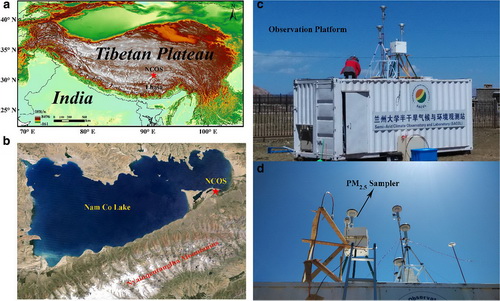Scientists Reveal the Relationship between the Light Absorption and Water-soluble Organic Carbon
Updatetime:2017-09-30From:
【Enlarge】【Reduce】
Water-soluble organic carbon in atmospheric fine particles, such as Black carbon (BC), Brown carbon (BrC), has a strong effect in absorbing light. Its light absorption features can warm the atmosphere and lead to the regional and global warming and intensify global cryosphere melting.
The Brown carbon (BrC), one kind of organic aerosols, has recently received much more attention because of its light absorption features. BrC is ubiquitous in the troposphere and present at high concentrations at high-elevation mountain areas. Therefore, it is very important to investigate the contribution of BrC to radiative forcing and the total aerosol light absorption at high altitudes, especially in the central Tibetan Plateau.
Recently, a research group led by XU Jianzhong from the State Key Laboratory of Cryospheric Sciences, Northwest Institute of Eco-Environment and Resources (NIEER) of Chinese Academy of Sciences collected 24-h average fine particulate matter (PM 2.5) filter samples in the central Tibetan Plateau using a low-flow rate aerosol sampler, to analyze the optical properties of organic aerosols and concentrations of different kinds of organic aerosol, and the content and distribution of water-soluble organic carbon in atmospheric fine particles in the central Tibetan Plateau.
The research results indicate that the light absorption spectra of water extracts of the samples provided strong evidence for the presence of BrC, with absorption increasing from the visible to the ultraviolet range. Besides, it can be inferred that biomass burning is an important source of water-soluble BrC in study area. Furthermore, research results suggest that South Asia is a potential source of pollutants to the central Tibetan Plateau.
The research results have been published in the journal Environmental Science and Pollution Research in an article entitled “Light absorption by water-soluble organic carbon in atmospheric fine particles in the central Tibetan Plateau”.

Location of the Nam Co Comprehensive Observation and Research Station (Image by XU Jianzhong)
Contact
XU Jianzhong
E-mail: jzxu@lzb.ac.cn
Northwest Institute of Eco-Environment and Resources, CAS, Lanzhou, Gansu 730000, China
Appendix




